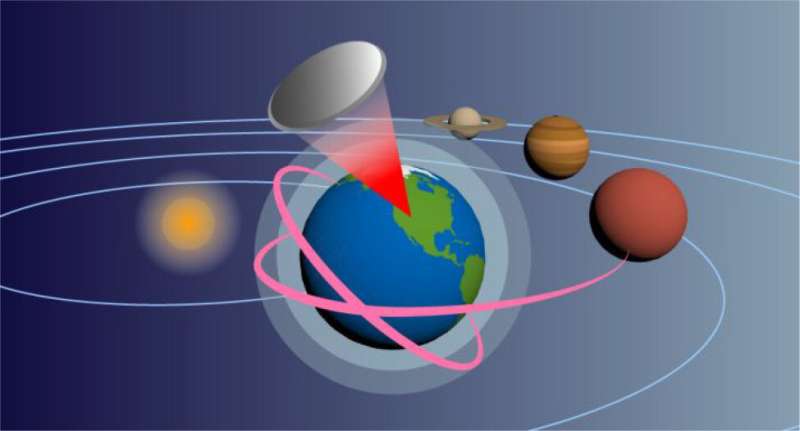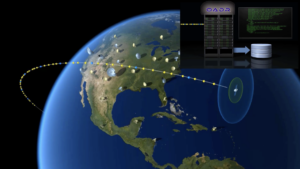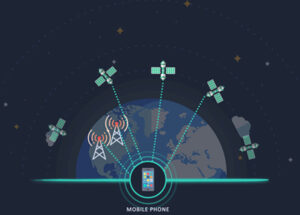Moon-bound rocket stage still most likely from 2014 Chang’e mission, despite China’s denial
Wednesday, 23 February 2022 17:35
Northrop Grumman wins $341 million Space Force contract to develop a deep-space tracking radar
Wednesday, 23 February 2022 15:01
The U.S. Space Force awarded Northrop Grumman a $341 million contract to develop a radar site to track active satellites and debris in high orbits.
The post Northrop Grumman wins $341 million Space Force contract to develop a deep-space tracking radar appeared first on SpaceNews.
Webb’s workhorse: NIRSpec
Wednesday, 23 February 2022 14:30 Video:
00:01:00
Video:
00:01:00
The NIRSpec instrument is the workhorse near-infrared spectrograph on board the James Webb Space Telescope and is provided by ESA.
NIRSpec will allow scientists to study objects embedded in shrouds of gas and dust, to find out more about how galaxies formed and evolved, and to characterise the atmospheres of exoplanet to determine if water is present.
The primary goal of NIRSpec is to enable large spectroscopic surveys of astronomical objects like stars or distant galaxies. This is made possible by its powerful multi-object spectroscopy mode, which will make use of use of roughly a quarter of a
Tiny probes could sail to outer planets with the help of low-power lasers
Wednesday, 23 February 2022 13:32
Space travel can be agonizingly slow: For example, the New Horizons probe took almost 10 years to reach Pluto. Traveling to Proxima Centauri b, the closest habitable planet to Earth, would require thousands of years with even the biggest rockets. Now, researchers calculate in ACS' Nano Letters that low-power lasers on Earth could launch and maneuver small probes equipped with silicon or boron nitride sails, propelling them to much faster speeds than rocket engines.
NOAA seeking information on commercial space situational awareness data
Wednesday, 23 February 2022 11:40
The Commerce Department is seeking information on commercial sources of space situational awareness (SSA) data to augment its own space traffic management capabilities.
The post NOAA seeking information on commercial space situational awareness data appeared first on SpaceNews.
Lynk reveals mobile network contracts
Wednesday, 23 February 2022 10:00
Lynk Global announced contracts Feb. 23 with seven mobile network operators serving Pacific and Caribbean Island nations.
The post Lynk reveals mobile network contracts appeared first on SpaceNews.
Caution! Martian wind at work
Wednesday, 23 February 2022 10:00
This image from ESA’s Mars Express shows part of possibly the largest single source of dust on Mars: a wind-sculpted feature known as the Medusae Fossae Formation, or MFF.
How Software Steers the Return to the Moon
Wednesday, 23 February 2022 09:07
The 1960s ushered in an era of human space exploration that has never been equaled
The post How Software Steers the Return to the Moon appeared first on SpaceNews.
SpaceX to launch SpaceLogistics Mission Extension Pod for Optus satellite
Wednesday, 23 February 2022 04:57 Northrop Grumman Corporation's SpaceLogistics has announced a launch agreement for its Mission Robotic Vehicle (MRV) spacecraft, and the sale of its first Mission Extension Pod (MEP).
Under the launch agreement, SpaceX will provide launch services for a planned spring 2024 launch of the MRV and several MEPs. Optus, Australia's largest satellite owner and operator, recently completed a purchase
Northrop Grumman Corporation's SpaceLogistics has announced a launch agreement for its Mission Robotic Vehicle (MRV) spacecraft, and the sale of its first Mission Extension Pod (MEP).
Under the launch agreement, SpaceX will provide launch services for a planned spring 2024 launch of the MRV and several MEPs. Optus, Australia's largest satellite owner and operator, recently completed a purchase Scottish Space Sector Charts Path to a Sustainable Future
Wednesday, 23 February 2022 04:57 A specialist working group of the industry-led group Space Scotland is contributing to the development of a sustainable space sector by collaborating on a roadmap that will focus on environmental issues in one of Scotland's fastest-growing industries. On behalf of the Space Scotland's Environmental Task Force, AstroAgency and Optimat will work with Scottish companies, international collaborators
A specialist working group of the industry-led group Space Scotland is contributing to the development of a sustainable space sector by collaborating on a roadmap that will focus on environmental issues in one of Scotland's fastest-growing industries. On behalf of the Space Scotland's Environmental Task Force, AstroAgency and Optimat will work with Scottish companies, international collaborators Whitepaper highlights ground segment's critical role in satellite connectivity
Wednesday, 23 February 2022 04:57 The satellite industry is set for unprecedented transformation, with the impact of cloud-based systems, the introduction of next-generation NGSO broadband constellations, and convergence towards a unified 5G network architecture. However, ground segments will also have to play a pivotal role to allow the industry to fully embrace and benefit from these changes.
While satellites have embark
The satellite industry is set for unprecedented transformation, with the impact of cloud-based systems, the introduction of next-generation NGSO broadband constellations, and convergence towards a unified 5G network architecture. However, ground segments will also have to play a pivotal role to allow the industry to fully embrace and benefit from these changes.
While satellites have embark Monitoring Arctic permafrost with satellites, supercomputers, and deep learning
Wednesday, 23 February 2022 04:57 Permafrost - ground that has been permanently frozen for two or more years - makes up a large part of the Earth, around 15% of the Northern Hemisphere. Permafrost is important for our climate, containing large amounts of biomass stored as methane and carbon dioxide, making tundra soil a carbon sink. However, permafrost's innate characteristics and changing nature are not broadly understood.
Permafrost - ground that has been permanently frozen for two or more years - makes up a large part of the Earth, around 15% of the Northern Hemisphere. Permafrost is important for our climate, containing large amounts of biomass stored as methane and carbon dioxide, making tundra soil a carbon sink. However, permafrost's innate characteristics and changing nature are not broadly understood. The second-generation PRISMA Earth observation system gets underway
Wednesday, 23 February 2022 04:57 Thales Alenia Space, the joint venture between Thales (67%) and Leonardo (33%), has signed a contract with the Italian space agency (ASI) to conduct a feasibility study for the PRISMA Second Generation (PSG) hyperspectral Earth observation system. It will be leading a consortium that includes Leonardo, Telespazio (the joint venture between Leonardo (67%) and Thales (33%)), e- GEOS and SITAEL.
Thales Alenia Space, the joint venture between Thales (67%) and Leonardo (33%), has signed a contract with the Italian space agency (ASI) to conduct a feasibility study for the PRISMA Second Generation (PSG) hyperspectral Earth observation system. It will be leading a consortium that includes Leonardo, Telespazio (the joint venture between Leonardo (67%) and Thales (33%)), e- GEOS and SITAEL. Rocky Road offers plenty of tasty science bites during Sols 3391-3394
Wednesday, 23 February 2022 04:57 MSL planning was met with beautiful images of our path ahead, like this one. We ended up planning to look at many of these rocks with our science instruments before driving on. This is a busy plan, covering four sols due to the holiday on Monday. In order to keep things manageable, especially given that our uplink is early tonight, we are doing all of our activities on the last 3 sols of the pla
MSL planning was met with beautiful images of our path ahead, like this one. We ended up planning to look at many of these rocks with our science instruments before driving on. This is a busy plan, covering four sols due to the holiday on Monday. In order to keep things manageable, especially given that our uplink is early tonight, we are doing all of our activities on the last 3 sols of the pla Day of Discovery: 7 Earth-Size Planets
Wednesday, 23 February 2022 04:57 Newspapers around the world printed the discovery on their front pages: Astronomers had found that a red dwarf star called TRAPPIST-1 was home to a close-knit family of seven Earth-size planets. NASA announced the system Feb. 22, 2017.
Using telescopes on the ground and in space, scientists revealed one of the most unusual planetary systems yet found beyond our Sun and opened the tantalizi
Newspapers around the world printed the discovery on their front pages: Astronomers had found that a red dwarf star called TRAPPIST-1 was home to a close-knit family of seven Earth-size planets. NASA announced the system Feb. 22, 2017.
Using telescopes on the ground and in space, scientists revealed one of the most unusual planetary systems yet found beyond our Sun and opened the tantalizi 